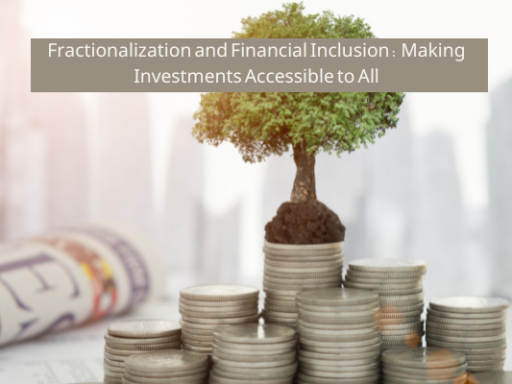Fractionalized assets have revolutionized investing by allowing individuals to own portions of high-value assets that were previously out of reach. This democratization of finance opens exciting opportunities for portfolio diversification and wealth creation. But navigating this new landscape requires a strategic approach. This article explores how to integrate fractional assets into your portfolio management strategy for optimal results.
Portfolio Diversification with Fractional Shares
Fractional ownership breaks down the ownership of a single asset, such as real estate, artwork, or even a rare collectible, into smaller tradable units. However, One of the most significant advantages of fractional assets is their ability to enhance portfolio diversification. Traditionally, diversification meant investing across different asset classes like stocks, bonds, and commodities. Fractional ownership allows you to diversify within asset classes. For instance, instead of affording only a single, high-priced stock, you can invest in fractions of several promising companies, spreading your risk and potentially increasing returns.
Strategies for Success
Here are some key strategies to consider when incorporating fractional assets into your portfolio management:
- Solidify Your Investment Goals and Risk Tolerance: Before diving in, define your investment objectives (short-term gains, long-term wealth creation, etc.) and risk tolerance. Fractional assets can involve higher volatility than some traditional investments.
- Conduct Thorough Due Diligence: Research the underlying asset, its market value, and its potential for appreciation. Investigate the reputation and track record of the platform facilitating the fractional ownership.
- Prioritize Diversification: Don’t put all your eggs in one basket. Spread your fractional investments across different asset classes, industries, or even geographic locations to mitigate risk.
- Analyze Fees and Costs: Fractional ownership platforms typically charge fees for transactions and management. Be sure to factor these costs into your investment decisions.
- Stay Informed: The fractional asset market is evolving rapidly. Keep yourself updated on industry trends, regulatory changes, and new investment opportunities.
Conclusion regarding Fractionalized assets
Fractionalized assets offer a compelling avenue to diversify your portfolio and gain exposure to previously inaccessible investments. By employing these strategies and maintaining a long-term perspective, you can leverage fractional ownership to achieve your financial goals. Remember, consulting with a qualified financial advisor can provide valuable guidance as you navigate this exciting new investment frontier.




